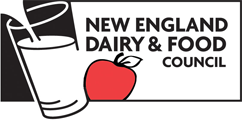Dairy checks a lot of boxes. It’s a protein powerhouse and it is filled with essential vitamins and minerals such as calcium and vitamin D. Adding to dairy’s already stellar health portfolio is emerging research on its contribution to reducing the risk of type 2 diabetes.
About Dairy Foods
The 2015-2020 Dietary Guidelines for Americans (DGAs) recommends 3 servings of low-fat or fat-free dairy foods daily for children 9 years and older and adults. Children ages 4-8 years are recommended to consume 2.5 servings and children 2-3 years are recommended to consume 2 servings of dairy per day. One reason for this recommendation is that dairy foods are a source of 2 “shortfall” nutrients (nutrients that most Americans do not consume enough of) identified in the DGAs: calcium and vitamin D. Dairy foods provide these nutrients through a variety of foods at a reasonable cost, suiting both taste buds and pocketbooks alike. However, eight out of ten Americans still fall short on reaching their recommended dairy intake.
About Type 2 Diabetes
Type 2 diabetes is one of the most widespread chronic diseases in the United States today, affecting nearly 29 million adults and accounting for more than 20% of all health care spending costs.1 The key risk factors for developing type 2 diabetes are a poor diet and lack of physical activity.2 The management and prevention of type 2 diabetes is not only a public health priority, but also a personal priority for many people. One strategy for prevention is eating a nutritious and well-balanced diet, which can include dairy products.
So, what does the research actually say about dairy consumption and type 2 diabetes?
In 2016, a systematic review conducted by Drouin-Chartier et al. showed strong evidence that:
- Low-fat dairy and yogurt consumption are associated with a lower risk of developing type 2 diabetes.3
- Consuming as little as almost one 8-ounce cup of low-fat milk per day has been associated with a 12% lower risk for type 2 diabetes.
The results from the systematic review were of high- to moderate-quality evidence, which tells us that future research in this area is not likely to contradict these conclusions.3 However, more research is needed to better understand the association between milk, cheese, and yogurt and type 2 diabetes.
This review also indicated that high-fat dairy food consumption is not associated with a higher risk for type 2 diabetes, but the level of evidence for this claim was not as strong as for low-fat dairy products.
Why Might Dairy Foods be Protective of Type 2 Diabetes?
- Dairy products are a good source of calcium. Studies show that calcium plays a role in increasing the production of insulin (a hormone released from the pancreas that lowers blood sugar) and in increasing insulin sensitivity (meaning the body is able to use less insulin to lower blood sugar levels). Research shows that vitamin D and magnesium may also have positive effects on these processes as well.4
- Dairy products contain vitamin K2, which has also been associated with reduced risk of type 2 diabetes.4
- Milk products may help in weight management and have also shown to be protective when it comes to two major risk factors of type 2 diabetes: high blood pressure and metabolic syndrome.5
What Does This Mean for Consuming Dairy?
Based on current recommendations and available research on dairy’s role in type 2 diabetes prevention, incorporating dairy in your diet may have a protective effect. According to the Joslin Clinical Diabetes Guidelines, dairy foods are listed as recommended options for good sources of protein and carbohydrates for those who are at high risk of developing type 2 diabetes and those living with type 2 diabetes.6 In addition the Joslin guidelines specifically mention yogurt and dairy products as foods that have been shown to be associated with a reduced risk of developing type 2 diabetes in some studies. Whether that’s having milk with cereal in the morning for breakfast, a cheese stick with an apple for lunch, or yogurt for dessert, getting 3 servings of dairy a day can be easy, delicious, and health promoting.
References:
- Centers for Disease Control and Prevention. At a Glance Fact Sheets. Diabetes: working to reverse the US epidemic, 2016. Atlanta, GA: U.S. Department of Health and Human Services; 2016. https://www.cdc.gov/chronicdisease/resources/publications/aag/diabetes.htm
- Oggioni C, Lara J, Wells JC, Soroka K, Siervo M: Shifts in population dietary patterns and physical inactivity as determinants of global trends in the prevalence of diabetes: an ecological analysis. Nutr Metab Cardiovasc Dis 2014;24:1105-11. DOI: 1016/j.numecd.2014.05.005
- Drouin-Chartier JP, Brassard D, Tessier-Grenier M, Côté JA, Labonté ME, Desroches S, Couture P, Lamarche B: Dairy product consumption and risk of cardiovascular-related clinical outcomes. Adv Nutr 2016;7:1026-40. DOI: 3945/an.115.011403
- Dagfinn Aune, Teresa Norat, Pål Romundstad, Lars J Vatten; Dairy products and the risk of type 2 diabetes: a systematic review and dose-response meta-analysis of cohort studies, The American Journal of Clinical Nutrition, Volume 98, Issue 4, 1 October 2013, Pages 1066–1083, https://doi.org/10.3945/ajcn.113.059030
- Beulens, J. W. J., van der A, D. L., Grobbee, D. E., Sluijs, I., Spijkerman, A. M. W., & van der Schouw, Y. T. (2010). Dietary Phylloquinone and Menaquinones Intakes and Risk of Type 2 Diabetes. Diabetes Care, 33(8), 1699–1705. http://doi.org/10.2337/dc09-2302
- Clinical Guidelines, 2016. Joslin Diabetes Center | Clinical Guidelines. Retrieved from http://www.joslin.org/info/joslin-clinical-guidelines.html



